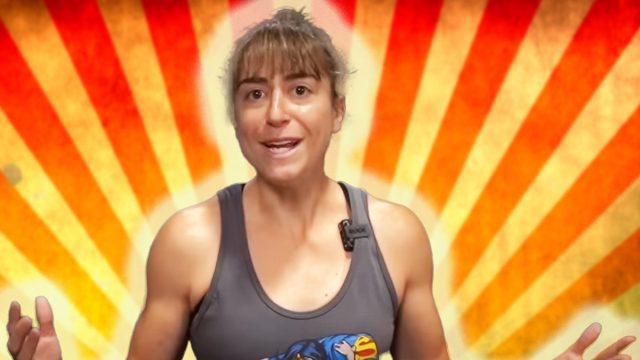Stop Making These 5 Protein Mistakes That Sabotage Your Body, Says Nutritionist

Are you struggling to meet your protein goals? If you've ever caught yourself sprinkling protein powder on chocolate or forcing down bland chicken breasts, you're not alone. Enter Cori Lefkowith, founder of Redefining Strength. With her practical approach to nutrition, she's helped thousands transform their relationship with protein. Read on to discover how small, sustainable changes can revolutionize your protein intake without sacrificing taste or sanity.
Stop Searching for New Solutions When Simple Ones Exist
"Too often, we try to find new ways to add in protein, instead of just tweaking what we're already naturally doing," Cori says in her post. The solution? Simply increase your current protein portions by an ounce. If you typically eat three ounces of chicken at lunch, bump it to four. These small adjustments to your existing meals can make a significant impact without overwhelming changes.
Divide and Conquer Your Protein Sources
When managing macros becomes challenging, Cori suggests a clever strategy: combine different protein sources. "Love steak but finding it's killing your macros? Try a surf and turf dish," she advises. By pairing a higher-fat protein with a leaner option, you can enjoy your favorites while meeting your goals. This approach prevents the monotony of eating large portions of a single protein source.
RELATED: 8 High-Protein Foods with Nearly Zero Calories That Melt Fat
Make Your Meals Work Smarter, Not Harder
Stop force-feeding yourself protein, Cori emphasizes. Instead, incorporate protein strategically into different dishes. "Soups, smoothies, oatmeal parfaits, casseroles, and omelets make this task easier," she explains. Try using bone broth as a soup base, blend Greek yogurt with protein powder in smoothies, or add cottage cheese to casseroles for an extra protein boost without feeling overwhelmed.
Embrace Non-Traditional Protein Sources
"We often only focus on complete protein sources," Cori notes, "but there are amino acids in many foods we eat that can really add up." Simple swaps like choosing buckwheat noodles over regular pasta or adding nutritional yeast (what Cori calls "protein sprinkles") to your dishes can significantly increase your protein intake while improving nutritional variety.
Make Protein Delicious, Not Boring
"It's almost like we get this attitude of, well, it's a diet, it's not supposed to be enjoyable," Cori observes. This mindset prevents lasting habits. Instead, experiment with seasonings, spices, and smart sauce choices. Try using soy sauce, tamari, or Greek yogurt-based dressings to add flavor without excessive calories. These additions can transform your protein-rich meals from bland to crave-worthy.
Smart Snacking Strategies
Rather than forcing protein into unsuitable combinations, Cori recommends thoughtful pairing. "Consider it on the side to your usual snack or treat," she suggests. Pair jerky with crackers or add natural deli meat to your apple and peanut butter plate. These combinations make protein integration feel natural and enjoyable.
RELATED: 12-3-30 Walking Method: 20 Proven Tips to Lose Weight Faster
The Power of Protein-Rich Combinations
Creating protein-rich combinations doesn't have to be complicated. "By diversifying your ingredients, it can make for tasty meals that don't make you feel like you're force-feeding yourself protein," Cori explains. Try combining eggs with ground turkey in omelets, or mixing different protein sources in your smoothies for variety and satisfaction.
Hidden Protein Opportunities
Look for unexpected ways to boost protein content. As Cori suggests, swap traditional pasta for edamame or lentil variations, use nutritional yeast as a seasoning, or incorporate cottage cheese into your usual dishes. These small changes can add significant protein without dramatic alterations to your favorite meals.
RELATED: 7 Simple Daily Exercises To Shrink Hanging Belly Fat
Sustainable Success Strategies
"Building lasting habit changes means developing a good relationship with our food," Cori emphasizes. Focus on creating meals you genuinely enjoy rather than forcing yourself to eat bland, uninspiring dishes. This approach ensures long-term success in meeting your protein goals while maintaining a healthy relationship with food.
Your Action Plan[
Remember Cori's core message: "Increasing your protein doesn't have to mean destroying dishes and snacks you love." Start with small portion increases, experiment with combinations, embrace variety, and focus on making your protein-rich meals delicious. These sustainable changes will help you hit your macro goals while actually enjoying your food. And if you enjoyed this article, take advantage of these 15 Quick Ways to Lose Body Fat Percentage in a Week.




